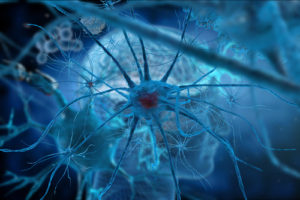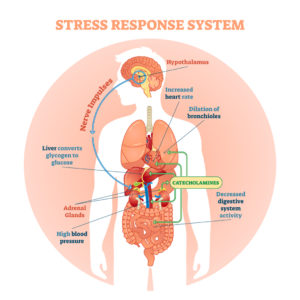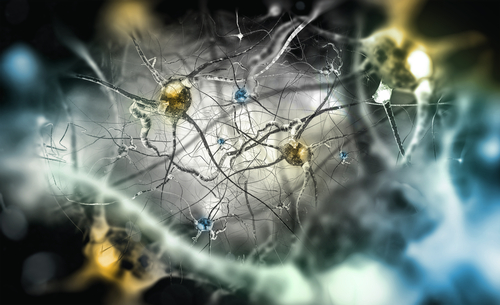If every 8 year old in the world is taught meditation, we will eliminate violence from the world within one generation.
– Dalai Lama
Can meditation really change the world or are the Dali Lama’s visions of a world living in peace the dreamlike visions of John Lennon?
Table of Contents - Jump to Section
Meditation Changes Our Brain Structure
 Meditators and yogis have been saying for eons that meditation makes us happier, calmer, and more compassionate toward others. Other reported benefits are decreased stress, enhanced ability to pay attention, and reduced symptoms associated with depression, pain, anxiety, and insomnia – all resulting in an overall increased quality of life. Now collaboration between contemplative neuroscience and long term meditators has been able to scientifically demonstrate how meditation can make all of this happen. MRIs reveal that meditation effects changes in our brain’s structure, the implications of which are profound, not only for individuals but also for humanity as a whole.
Meditators and yogis have been saying for eons that meditation makes us happier, calmer, and more compassionate toward others. Other reported benefits are decreased stress, enhanced ability to pay attention, and reduced symptoms associated with depression, pain, anxiety, and insomnia – all resulting in an overall increased quality of life. Now collaboration between contemplative neuroscience and long term meditators has been able to scientifically demonstrate how meditation can make all of this happen. MRIs reveal that meditation effects changes in our brain’s structure, the implications of which are profound, not only for individuals but also for humanity as a whole.
What are the implications of these changes in the brain? Some may say that taking a pill will give you the same effect. Assuredly, medication also changes how we respond to stress, but there is an essential difference between medication and meditation. Medication affects our response to stress systemically, and most often, medication also affects untargeted parts of the body, causing adverse side-effects. Meditation, on the other hand, affects the structure of our brain, offering a long term solution far more effective than medication. Medication only alleviates the symptoms of stress, often rendering us impervious to real feelings, leaving the root cause of stress dormant in the ground of our being, ready to sprout again whenever the opportunity presents itself. Meditation changes the way we respond to stress, allowing us to face it.
Before we look at the specific effects of meditation, let’s take a look at our current state of affairs.Default Mode Network
How often do you catch yourself in a daze when you should be paying attention to what you are doing? Mind wandering and daydreaming are associated with activation in an area of the brain known as the Default Mode Network (DMN). The DMN is associated with “processes ranging from attentional lapses and anxiety to clinical disorders, such as attention-deficit hyperactivity disorder (ADHD) and Alzheimer’s disease.” Research has also shown that the wandering mind has been associated with higher levels of unhappiness.
When we are unable to focus, our minds go into default mode, habitually running into the deep crevices of negative or unproductive thought patterns. Neuroscientists call this “self-referential processing”. It means that we spend an awful lot of time hyper-focused on ourselves, anxiously reliving our pasts, worrying about the future, and believing negative thoughts about ourselves and others. In psychological terms this uncontrollable tendency is called a fixation, and it is something which stands in the way of our psychological development. Fixations trap us in both limited and limiting states of awareness thereby activating unhealthy emotional responses in us.
The Stress Response and Chronic Stress
Biological stress, a wondrous expression of the innate intelligence of our body, is a response to an environmental condition or stimulus called a stressor. Bypassing the conscious mind, the stress response autonomously takes over when threat is perceived. This fight-or-flight response is triggered by the chemical signal epinephrine, which initiates a set of reactionary changes in our body, preparing us to either face or flee an enemy. Our muscles tense up; our heart rate and blood sugar rises; our immune system is suppressed and our digestion slows down. After the danger passes, our body returns to its normal state. If it didn’t do so, it would suffer the consequences of sustained high blood pressure, a suppressed immune system, hyper-tense muscles, and slowed digestion.
 Today many people suffer the consequences of living in a persistent state of fight-or-flight. Consider how many people have heart disease, high blood pressure, stress-induced obesity, diabetes, and high cholesterol – not to mention stress-induced aggression. Think about how people behave when they get behind the wheel of a car. A car passing them or driving too slowly becomes a personal act of aggression. We see fight-or-flight behavior on Black Friday as people trample over each other and sometimes even kill each other trying to get the best deals on a sales item. For others, this aggression is turned inward, manifesting itself in a constant stream of self-loathing, criticism, and doubt.
Today many people suffer the consequences of living in a persistent state of fight-or-flight. Consider how many people have heart disease, high blood pressure, stress-induced obesity, diabetes, and high cholesterol – not to mention stress-induced aggression. Think about how people behave when they get behind the wheel of a car. A car passing them or driving too slowly becomes a personal act of aggression. We see fight-or-flight behavior on Black Friday as people trample over each other and sometimes even kill each other trying to get the best deals on a sales item. For others, this aggression is turned inward, manifesting itself in a constant stream of self-loathing, criticism, and doubt.
These states of mind are associated with what C.G. Jung called complexes. The word complex is one that we throw around lightly in conversation, but a complex is anything but “light”. Complexes are often heavy and dark. Not taking them seriously leaves us permeable to a full-on invasion which can drag us into prolonged states of discontent or disorientation, i.e. prolonged states of misidentification with the mind’s myriad manifestations. Complexes are autonomous, meaning they have enough power to “elude [our] conscious will in the most incredible manner … to put extraordinary ideas into [our] heads, induce [us] into unwanted and unwelcome moods and emotions, and lead [us] to astonishing actions” (C.G. Jung CW 7, par 375).
Neuroplasticity
 Neuroplasticity is a term that describes our nervous system’s amazing ability to adapt and modify itself not only to changes in the external environment, but also based on whatever we do most often. Every time we repeat a behavior or a thought pattern, we strengthen the associated neuronal pathway in the brain. It’s how we learn and become good at any skill. The more we do it, the less conscious it becomes until we can literally do it unconsciously. When we get that good at something, we call it an expertise.
Neuroplasticity is a term that describes our nervous system’s amazing ability to adapt and modify itself not only to changes in the external environment, but also based on whatever we do most often. Every time we repeat a behavior or a thought pattern, we strengthen the associated neuronal pathway in the brain. It’s how we learn and become good at any skill. The more we do it, the less conscious it becomes until we can literally do it unconsciously. When we get that good at something, we call it an expertise.
People have become experts at stressing out, at being habitually frustrated, short-tempered, anxious, and ready to perceive anything as a direct threat, and their bodies respond appropriately.
Certain areas of the brain are associated with the stress response – areas which are shown to be physically altered by meditation.
The Amygdala
The amygdala is a region of the brain associated with fear, anger, frustration, anxiety, and stress. It has a direct neural connection to a part of the cortex called the anterior cingulate, which is associated with memory, learning, decision-making, impulse control, and emotional regulation. The amygdala also underlies our ability to emotionally attune to others, something which affects our social awareness – our ability to perceive what others think about us. When our amygdala is more active, the anterior cingulate is less active. This translates into memory loss, inability to focus, bad decisions, and uncontrolled moods and behavior. When our anterior cingulate is more active, our amygdala is less so.
Because the amygdala is a more primal control center, an overactive amygdala can make us behave like the primal beasts from 2001: A Space Odyssey, rendering us incapable of recognizing the humanity in another person, causing us to act like road-raging barbarians and frenzied bargain hunters who have no control whatsoever over their impulses. Just watch the daily news and you can see what happens when people at the collective level are overpowered by these impulses. Or better yet, watch this video:
Hypothalamus
When stress is perceived, the amygdala sends a distress signal to the hypothalamus, which acts like a control and processing center for fear. The hypothalamus communicates with the rest of the body, activating either the fight-or-flight response or its opposite, the relaxation response. It processes the sensory cues for stress and manages the communication between the fear – your primal response – and the prefrontal cortex, your executive decision-maker.
Prefrontal Cortex
Executive attention is our capacity to choose what we pay attention to and what we ignore. If you cannot mediate your response to fear, the hypothalamus will transmit the fight or flight signal. The prefrontal cortex is also the area of our brain associated with problem-solving, emotional processing and regulation, adaptation to challenges, and impulse control. Chronic stress shrinks neurons in this area, reducing our capability to control our response to fear, whether that fear is an actual threat or a generalized anxiety. Those who are driven by fear are unable to alter their course in life, even when it is damaging. They continue to repeat the same destructive patterns and engage in the same bad relationships, something which leads to neurosis in its most pathological expressions.
Hippocampus
The hippocampus, part of the feedback control system in the stress response, relays the context of a situation to the hypothalamus. It also stores and retrieves memories and is possibly the origin of the strong emotions related to those memories. Chronic stress has been shown to shrink the hippocampus, the results of which affect our capacity to accurately perceive the true context of a situation. Inaccurate perception of a situation limits our perspective to that of our fixations where we judge both ourselves and others based only on that narrowed viewpoint. Self-limited perceptions restrict and distort what we can see and what we are willing to see, and from that limited perspective how do we even begin to see new possibilities?
With exposure to chronic stress, neurons in the hippocampus and prefrontal cortex atrophy, whereas neurons in the amygdala actually grow, leading to increased anxiety and aggression. People who suffer from depression and PTSD have a measurably smaller hippocampus. But there is hope for these people since research has showed these neurons are not necessarily irreparably damaged and may respond to “medication”.
Meditation as Medication
Initial studies of the effects of meditation were done on long term meditators. When the research was extended to looking at the effects after short-term practice, the results are literally mind-bending. Most of the research we are looking at is from an eight week study, but some of these same results have been seen in as little as 21 days.
The Amygdala
After only eight weeks of meditation people reported feeling less stressed, even though nothing about their environment had changed – they still had the same stressful jobs and the same relationship and money problems. The MRI scans of these participants showed decreased grey matter in the amygdala. Again, these changes in the amygdala were associated not with a change in environment, but rather with a change in the participants’ reaction to the stressors.
Left Hippocampus and Temporal-Parietal Lobe
Participants also reported feeling more compassionate toward others and correlating with these feelings, the MRI scans showed increased grey-matter density in the hippocampus and the temporo-parietal junction, areas of the brain respectively associated with learning, memory, and perspective-taking and with self-awareness, compassion, empathy and introspection (Hölzel and Lazar 2011).
Frontal Cortex
The scans also showed increased grey matter in the frontal cortex, the area of the brain responsible for executive attention and decision-making, problem-solving, memory, emotional processing, adaptation, and impulse control. As we get older this region shrinks, hence the reason some of the skills mentioned above start to fail. Brain scans of 50-year old long-term meditators showed frontal cortex grey matter to be the same size as those of 20-year olds, indicating that meditation may slow the effects of aging on the brain.
Default Mode Network
Remember, this region of the brain is associated with mind-wandering and unhappiness. Meditation research reveals this area of the brain was not only deactivated during meditation, but was also deactivated outside of meditation. The scans also indicated a stronger connection in the meditators between those areas of the brain associated with self-monitoring and cognitive control.
If we look at the mind in terms of measurable energy, it appears that meditators can harness the energy wasted on mind-wandering and redirect it toward self-monitoring, cognitive control, better focus, and a wider perspective. This ability has led scientists to hypothesize a new default mode network, one which is based on an ability to remain present-centered and more objectively aware of what is happening in both our interior and exterior worlds.
It is important to note that despite the fact that we can locate all of these centers of “control” in the brain, that behind it all there is that something else witnessing, experiencing, and responding to everything – the one major control center that science cannot locate. Yogis call it the seat of consciousness. Jung called it the human soul. Ultimately, it is our prime decision-maker and something from which we are painfully detached.
A New World Vision
Do these changes in the brain mean that we no longer experience the full spectrum of human emotions? Of course not, we are still human beings. Meditation won’t leave us skipping through the daisies like tripping hippies at Woodstock. The level of changes effected by meditation means something far more profound than that. Self-monitoring, better cognitive control, and emotional regulation mean that we can separate ourselves from complexes when they arise, rather than identifying with them. This separation gives us a stimulus barrier between the stressor and our reaction to it, something which creates an alchemical space from which to process a situation, whether that something is an inner or an outer occurrence. Only when we can separate ourselves from the effects of the stressor can we make a conscious decision about how we respond to it. This does not mean that we no longer suffer, but rather that we no longer identify with our suffering.
What, on a lower level, had led to the wildest conflicts and panicky out-bursts of emotion, from the higher level of personality now looked like a storm in the valley seen from the mountain top. This does not mean that the storm is robbed of its reality, but instead of being in it one is above it.
– C.G. Jung, Collected Works 13, par 17
A person with a more compassionate and expanded perspective is aware of a “higher consciousness looking on.” He is capable of seeing his or her fellow human being as a brother or a sister in humanity, and of seeing a situation from 360 degrees, rather through the tunnel vision of limited awareness, the world-wide, collective implications of which bring us back to the initial quote of this article:
If every 8 year old in the world is taught meditation, we will eliminate violence from the world within one generation.
– Dali Lama




Comments
This comment is about the dream of a dead snake. I read through all of the ancient symbolism and was aware of some but not all of it. I am 64 and I just completed a once a year dialogue on the teachings of Jiddu Krishnamurti. The dialogues lasted 5 days. I have been studying him for 40 years. My dream was that I stepped out onto my porch where I saw a plastic ziplock bag with a dead multicolor snake inside that was folded in half. My only reaction was a question, “Who gave this to me”? The dream was over. I am the sole caregiver for my husband who has Parkinson’s and dementia. And I have a person in my family who is a Qanon person. Today, after reading your teachings, I felt that it was something coming to an end in my life. But not anything physical. I have struggled with being at odds with our political situation. After the dialogues I realized that people are who they are. I cannot change the world. In fact, I have wondered if things are happening exactly as they should be. I am an artist and I have no time for my artwork, but maybe if I deeply realize that I am right where I should be, something will break. Maybe I can fit in small amounts of time for art. As for the Qanon person in our family, I think my insight into the nature of things has allowed me to stop worrying about my daughter being married to this man. I don’t have to argue with him. I can’t change him or Washington. Today when I refused to listen to what he was shouting at me, he verbally attacked me. I think I, at the old age of 65 have realized that I need to live MY life. I can’t save everyone, not even my husband. I left my daughter’s house in tears and shaking, but I think my struggle is over. Left or Right, the politician wants your vote. I don’t want to be manipulated by fear mongers on either side. What do you think?